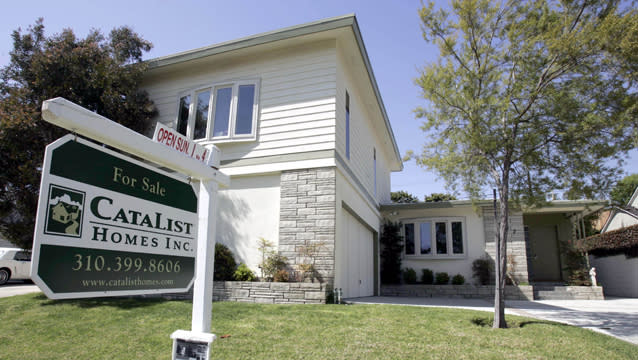“This Is Not a Normal Housing Market”: Economist Michelle Meyer

More good news about the housing market. CoreLogic Tuesday reported that home prices rose 12.1% from a year ago—the biggest year-over-year increase since February 2006 and the 14th monthly increase in a row.
And distressed sales accounted for only a sliver of the price gain. Excluding those sales, home prices rose 11.9%, indicating that demand is broad-based, well beyond the sales of distressed (read: cheaper) properties in default or foreclosure.
Related: Housing Recovery is a Sham, Says the Guardian's Heidi Moore
“We’re clearly seeing momentum build in the housing market and that will translate into a continued rise in home prices,” says Michelle Meyer, senior U.S. economist at BofA Merrill Lynch Global Research. She tells The Daily Ticker that home prices will increase 8%-10% this year—slightly slower than the current rate but still a brisk pace.
“This is not a normal housing market. This is not a normal housing recovery,” says Meyer.
Click here to check mortgage rates in your area.
For one thing, interest rates are rising, but remain at historically low levels. The 10-year Treasury note—which is the basis for the 30-year fixed rate mortgage—is trading at historically low levels—near 2.14%, but that’s well above the 1.78% of a month ago.
“The speed by which interest rates have increased is a little bit concerning for short-term housing fundamentals,” says Meyer. “It will likely create a bit of a shock factor for some people who were kind of on the fence to buy and were pricing out a home based off of a lower rate environment.” A 30-year fixed rate mortgage is now around 3.81%, up from 3.35% just a month ago.
Related: Robert Shiller: Home Prices Will Remain Relatively Stagnant for Next 10 Year
Purchases of distressed homes—in default or foreclosure-- are another example of how this housing recovery is different. They accounted for a good portion of purchases in especially hard-hit markets like Las Vegas and Phoenix, but they’re slowing.
The National Association of Realtors reports that sales of distressed homes—in default or foreclosure—accounts for 18% of existing home sales for April—down from 21% in March and 28% a year ago. “Once the distressed pipeline is cleared out, [the market] is not as attractive to investors,” says Meyer.
In the meantime home sales continue to climb. Existing home sales in April surged to their highest level in nearly 3.5 years, and new home sales were 29% higher than a year ago.
Related: This Housing Recovery Has Legs
And, perhaps most important for the economy, the impact of these gains is not limited to housing. Auto sales in May rose more than 8% overall to an annual pace of 15.3 million--compared to less than 14 million a year ago—in part because of a housing rebound.
“If you buy a new home oftentimes that comes with buying an automobile for that home,” says Meyer. But the “key linkage between housing and autos is household formation, which is rebounding.” And that, says Meyer, provides support not only for home sales but also for rentals and auto sales as well.
Tell Us What You Think!
Got a topic you’d like covered? Have a guest you’d like to see interviewed? Send an email to: thedailyticker@yahoo.com.
You can also look us up on Twitter and Facebook.
More from the Daily Ticker:
How a Wall Street Trader Blew Through $10 Million
Tesla is a Technology Company That Wraps Batteries in Cars
Cadillac, China Helping GM to Get Its Groove Back